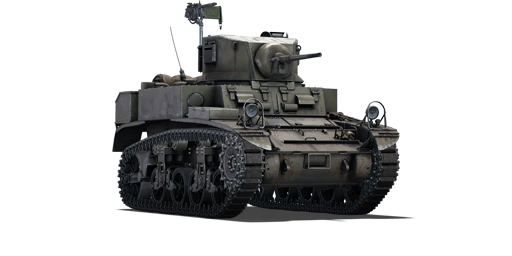The M3A1 is the second variant of the M3 light tank family. The M3A1 features a new turret with turret basket and a removed cupola. A new main gun vertical stabilizer was installed, and the sponson machine guns were removed. It entered World War II in May 1942, with enhanced turret protection than the previous variant, M3, incorporating the "turret basket" and a taller 7.62 mm M1919A4 light machine gun mount for light anti-aircraft roles. The sponson machine guns on both sides of the hull were removed at that stage, as the three remaining machine guns on the main hull were deemed adequate for anti-infantry purposes. They also had a better vertical stabilizer than the earlier M3 Stuart. During World War II, a total of 4,621 M3A1 were manufactured, with the last delivered in February 1943.
Introduced in Update 1.45 "Steel Generals", the M3A1 is a continuation of the M3 light tank family that shares many similarities with other U.S. Army light tanks of rank I. The M3A1 saw substantial action in their first major campaign in the west, the North African invasion (Operation Torch) in November 1942. They had some success against early enemies' light tanks, but they were highly vulnerable to up-gunned Panzer III and Panzer IV, due to the flat squared hull.















